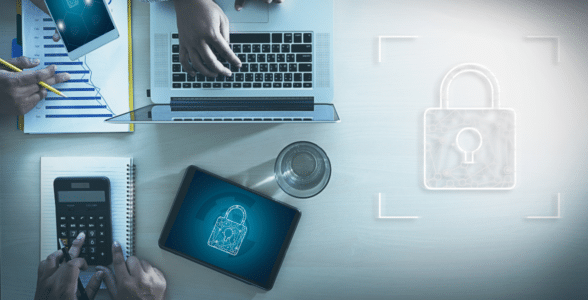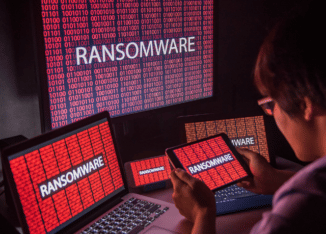Today, digital technologies and data play a crucial role in the daily operations of almost any organisation, regardless of size or industry. To ensure operational continuity, and to guarantee the privacy of sensitive information, it is vital that these critical systems and data have the appropriate level of protection.
We don’t need to go into the details of why cyber security remains a fundamental aspect of any technology strategy – the news headlines speak for themselves. In an evolving landscape where the unimaginable becomes reality and change morphs into the ordinary, IT professionals must remain on the forefront of what comes next.
DTP’s cyber security experts have carefully selected a portfolio of industry leading security technologies, which enable our customers to safeguard their systems and data, while staying ahead of emerging cyber threat trends.
-
DARKTRACE – AI DEFENCE
Cyber security teams are often unable to keep up with the speed, timing, and sophistication of today’s cyber attacks. Advanced threats require an advanced form of defence, and Darktrace provides this through cutting edge machine learning and artificial intelligence techniques. Darktrace enables organisations in all industry sectors to build resilience against novel attacks by autonomously learning their ‘digital DNA’.
Self Learning AI powers an autonomous threat detection, investigation and response across all areas of the business. With Darktrace, reliance on known threats or historical attack information becomes a thing of the past.
-
HP – ENDPOINT SECURITY
Companies face a growing dilemma: how do they build the distributed, hybrid workforce of the future, without exposing the enterprise to unprecedented levels of cyber risk?
HP Wolf Security is a new breed of endpoint security. HP’s portfolio of hardware-enforced security and endpoint-focused security services are designed to help organisations safeguard PCs, printers and people from circling cyber predators.
-
ZERTO – DATA RECOVERY
Zerto, a Hewlett Packard Enterprise company, empowers customers to run an always-on business by simplifying the protection, recovery and mobility of on-premises and cloud applications.
Zerto remains laser focused on three key use cases – ransomware recovery, disaster recovery and multi-cloud mobility.
-

ENDPONT SECURITY: THE FIRST LINE OF DEFENCE
Cybercriminals are increasingly exploiting vulnerabilities in the changing workplace and digital transformation is widening the attack surface. As overstretched IT teams struggle to keep up, endpoint security has become increasingly critical as the first line of defence.
HP engineer the world’s most secure PCs and Printers and their Wolf Security portfolio provides comprehensive endpoint protection and resiliency that starts at the hardware level, and extends across software and services. HP Wolf Security a Zero Trust security product that is continually evolving to help customers stay ahead of modern threats.
-

From self-healing firmware and in-memory breach detection, to threat containment via isolation, HP Wolf Security enables remote recovery from firmware attacks and delivers protection against known and unknown threats. Customers benefit from robust, built-in protection from the BIOS to the browser and cloud-based intelligence enhances threat data collection turning a traditional weakness – the endpoint – into an intelligence gathering strength.
-
AI: AUTONOMOUS THREAT DETECTION & RESPONSE
Darktrace takes a fundamentally different approach to defence. This advanced security product applies machine learning and artificial intelligence to learn an organisation’s ‘digital DNA’. This data is then used to identify and nullify novel attacks. Unlike traditional anti-virus software which rely on historical or previously documented threats, Darktrace can detect the ‘unknown unknowns’ through an organisation’s normal pattern of behaviour. artificial ARTIFICIAL
Over 6,500 organisations, in more than 100 countries, rely on Darktrace’s digital immune system to defend their IT infrastructures from cyber criminals. Darktrace is trusted to protect the vast and complex infrastructures of private corporations such as Samsung, Coca-Cola, and Comcast. Darktrace is also relied on by public sector organisations such as the NHS, who applied the technology to successfully protect the data of millions of health care patients from the widely publicised “WannaCry” ransomware attacks.
-

AI is brought to your data, wherever that data lives. Your entire digital estate is analysed and an understanding of what normal business operations look like for you is developed. So even in the earliest stages of an in-progress attack, we are able to detect an out of the ordinary occurrence – before it does any damage. From this fundamental knowledge of your business, we then respond to enforce normal business operations and investigate 100% of threats we detect. We can do this across your entire digital estate – Cloud, endpoint, applications, operational technology, email and the network.
Darktrace complements and integrates with existing security products, using the power of AI algorithms, to make them even more effective – giving you a greater return on investment through adoption of a security ecosystem.
-

DISASTER RECOVERY: EDGE TO CLOUD, CONTINUOUS DATA PROTECTION
Whether natural disaster or through human error, there is often no tolerance for downtime from any disruption. Zerto’s simple, software-only platform offers continuous availability and protection regardless of where your applications might be running. If there’s an issue, you can recover quickly, at scale and with confidence – in a matter of minutes not hours or even days.
Ransomware Recovery – resume in minutes to seconds before an attack occured
Disaster Recovery – foolproof recovery with fastest RTO and RPO
Multi-Cloud Mobility – freedom to innovate across clouds
-

In 2023, ransomware poses one of the biggest cyber threats to your organisation. The UK’s National Cyber Security Centre outlines that ransomware is the “most immediate danger to UK businesses”, with attacks doubling year on year. This form of attack can be devastating to organisations, and victims range from FTSE 100 companies to local schools and councils. Zerto allows a resilient recovery from ransomware attacks by creating continuous, immutable backups of your data every 10-15 seconds. This method enables customers to recover entire sites, applications and databases at scale within a matter of minutes, preventing costly downtime. To learn more watch our: explainer video.
A trusted partner of DTP, Zerto is a pioneer of continuous data protection and has led the market for over a decade. Together we can help you to achieve continuous protection for any app, any cloud and any threat.
CUSTOMER TESTIMONIALS
FAQs
What do cyber security consultants do?
Cyber security consultants are experts that help organisations protect against cyber threats and ensure compliance with regulatory requirements. They analyse an organisation’s current cyber security posture to identify any weaknesses or security vulnerabilities. After identifying any risks, they advise and implement security solutions and continuously monitor their application. Ultimately keeping sensitive data and business critical systems secure.
What security solutions do DTP Group offer?
DTP offers a portfolio of carefully selected industry leading cyber security solutions. With endpoint device protection from Wolf Security, autonomous threat detection and response from Darktrace, and disaster recovery from Zerto. Each solution covers a different aspect of protection, helping you form a comprehensive digital security strategy.
What is enterprise security?
Enterprise security is the foundation that protects an organisation’s data in all forms. This security involves implementing policies, practices, technologies to protect sensitive information, systems and digital assets. These measures are not limited to defending against digital threats, they cover physical security, compliance, access control, incident response, data loss prevention and disaster recovery.
What are the benefits of endpoint security?
Endpoint security refers to the protection of devices that connect to an organisation’s network. Some examples of a network’s endpoints are: desktops, laptops, mobile devices, printers and servers. Some benefits of protecting endpoints security include: reduced downtime from cyber attacks, detecting and blocking malicious software, complete visibility across all the organisations endpoints, protection of the remote workforce.
What are the benefits of IoT security?
The Internet of Things (IoT) refers to the network of smart devices that can collect and exchange data. For example, physical security systems such as motion sensors and CCTV cameras. Without IoT security these smart devices can be accessed, and attackers can disrupt the device’s functionality or steal data. Benefits of IoT security include: protecting sensitive data and systems from external threats, improved reliability of IoT systems, and improved incident response.
How can I improve my personal cyber security?
Here are five simple methods to improve your security: 1. Enable multi-factor authentication, 2. Create strong passwords and use a password manager, 3. Regularly update software, 4. Beware of Phishing attempts, 5, Install an antivirus software



